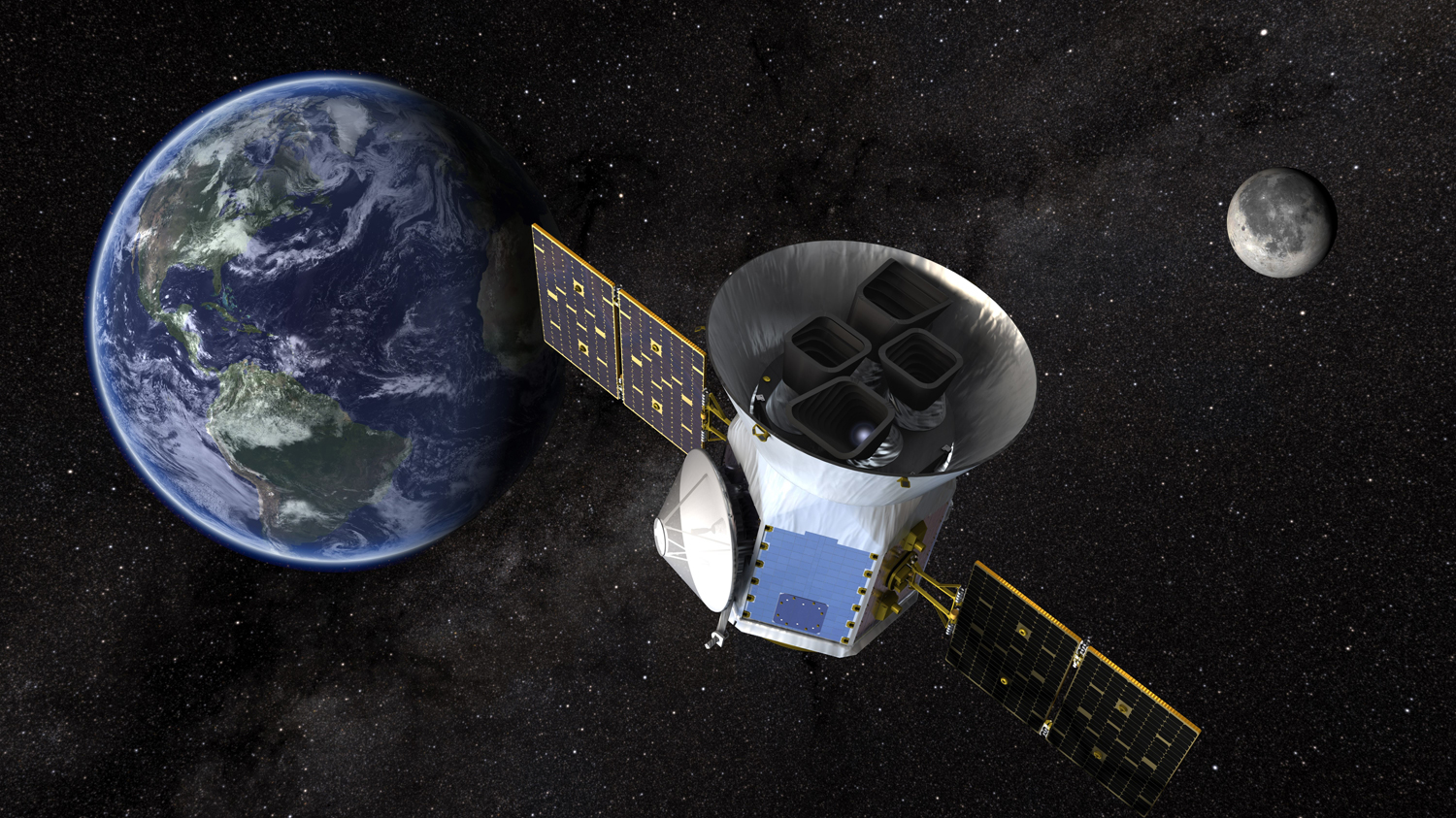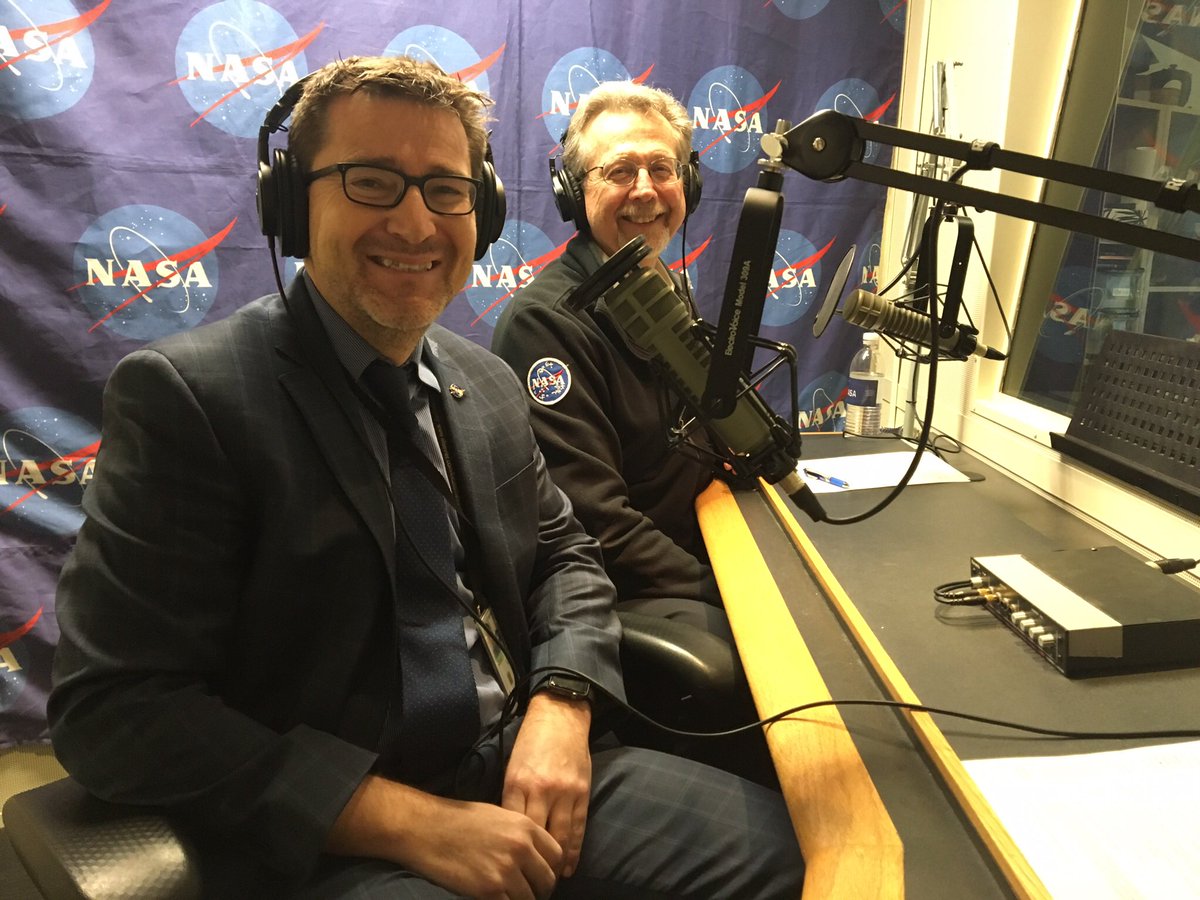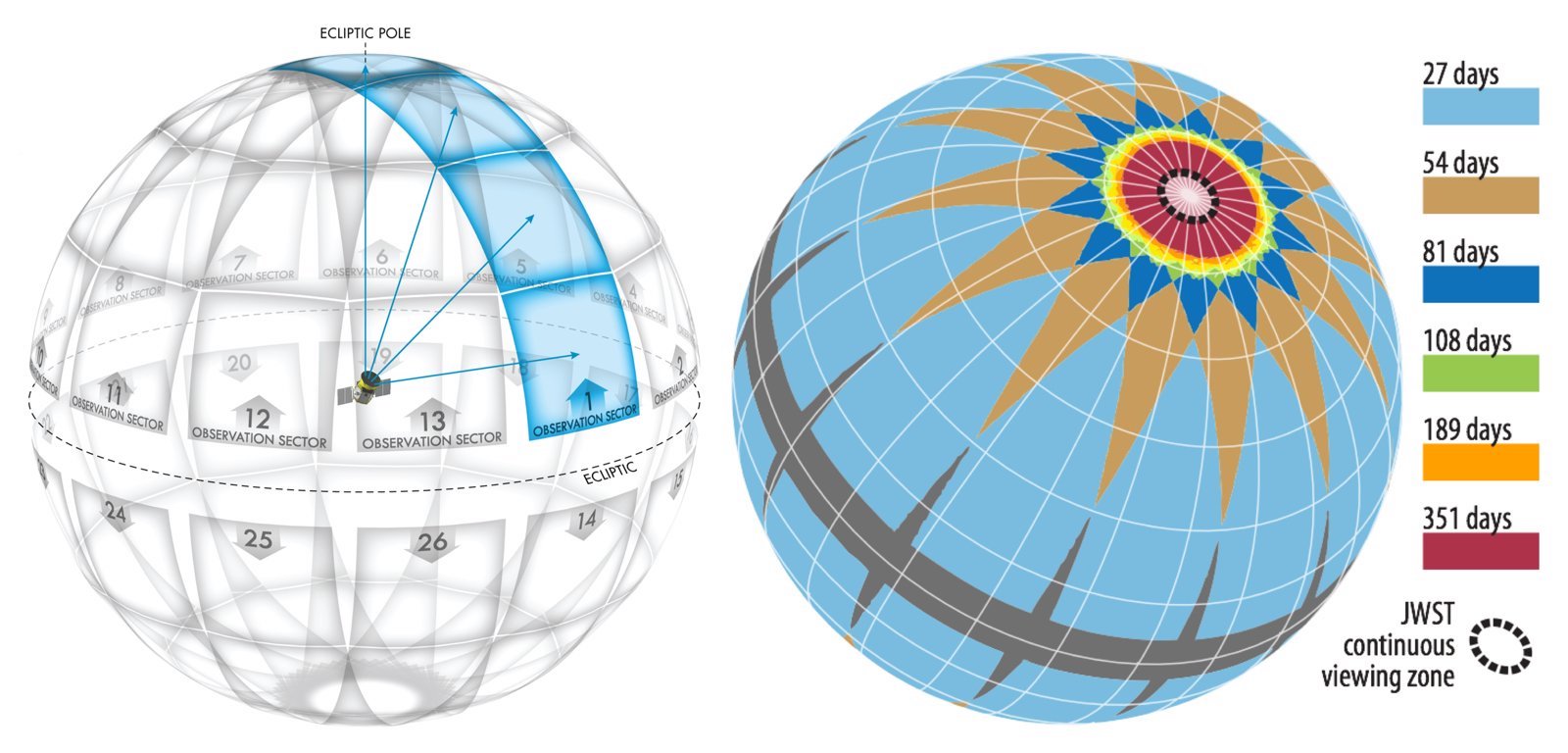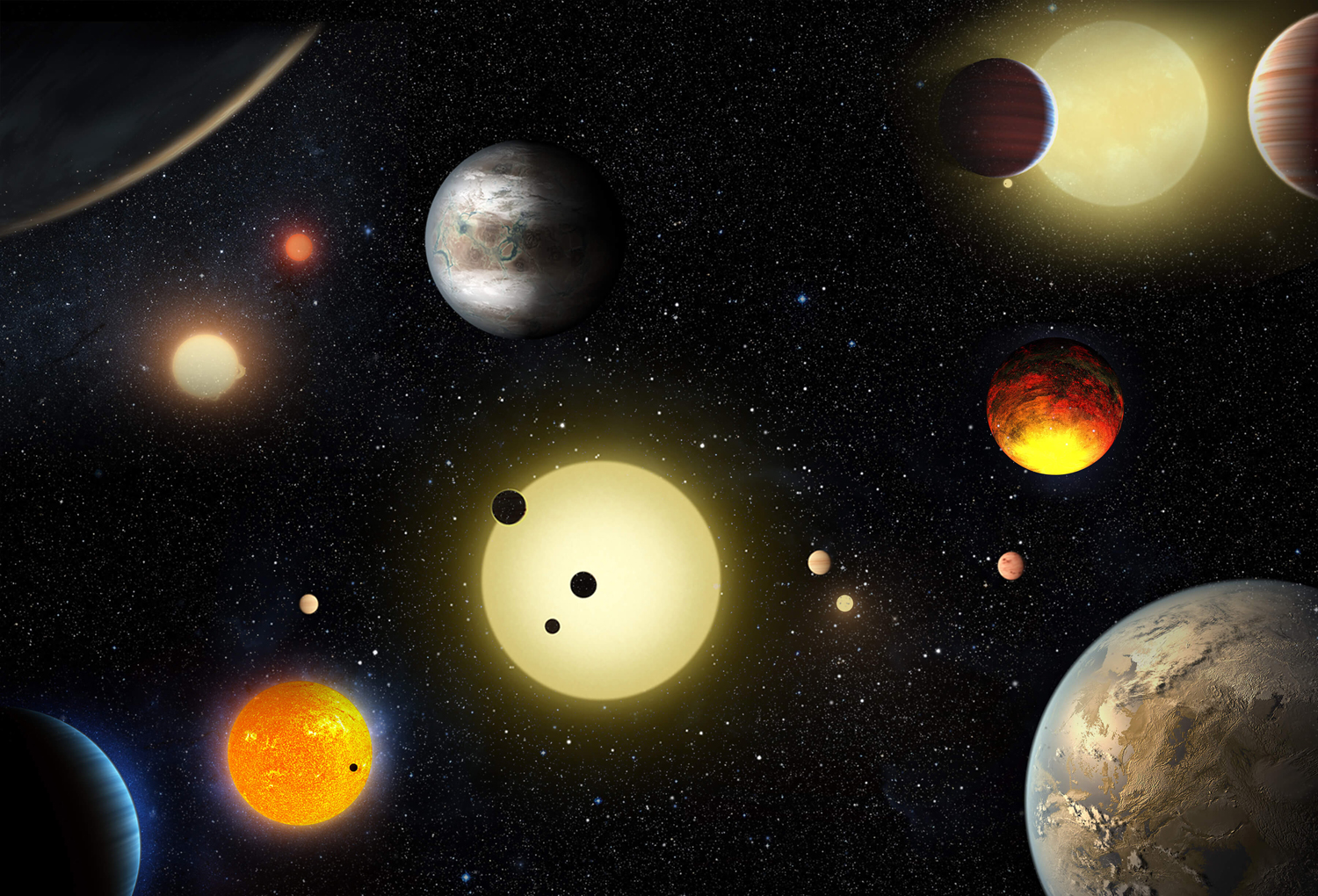Gravity Assist Podcast: TESS, with Martin Still

The Gravity Assist Podcast is hosted by NASA's Chief Scientist, Jim Green, who each week talks to some of the greatest planetary scientists on the planet, giving a guided tour through the Solar System and beyond in the process. This week, he's joined by Dr Martin Still, the Program Scientist on the Transiting Exoplanet Survey Satellite, also known as TESS, to find out how this planet-hunting space mission will discover new worlds by looking at more than 200,000 of our brightest neighboring stars.
You can listen to the full podcast here, or read the abridged transcript below.
Jim Green: Martin, since TESS is an acronym — everything we do at NASA is an acronym — what does it stand for? [Planets Aplenty with the TESS Mission: Q&A with the Director of the Kavli Institute]
Martin Still: TESS is indeed an acronym. It stands for Transiting Expolanet Survey Satellite. The mission was selected by NASA through its Explorer program, and its principal investigator is Dr. George Ricker working at the Massachusetts Institute of Technology.
Jim Green: TESS is building on what the Kepler Space Telescope has found, but instead of looking at stars far away as Kepler did, is TESS designed to look at a different set of stars?
Martin Still: That's right. We can look upon NASA's exoplanet strategy in terms of three aspects. The first is detection: where do the planets exist? The second is characterization: how big are they, how [massive] are they, do they have an atmosphere, do they have a solid surface? The third is, can we find any evidence for life, for biomarkers, on these planets or in their atmospheres?
Kepler was NASA's first step in that journey. It enabled us to determine how common exoplanets are in the Galaxy, how likely we are to find an exoplanet if we look towards a particular star. And of course, the big science result from Kepler was that exoplanets are almost ubiquitous in our Galaxy. And so, we could then launch TESS, which is our next step in that journey, with certainty that we are going to detect many nearby exoplanets around the nearest stars in our neighborhood.
Breaking space news, the latest updates on rocket launches, skywatching events and more!
Jim Green: Can you remind me exactly how this transiting idea works to be able to discover planets?
Martin Still: We require a very specific configuration, where the orbit of a planet is aligned almost to our line of sight, just a degree or less away from the direction or the line between us and the distant star that we're looking at. If it is perfectly aligned that way, then once per orbit, that planet will pass in front of its host star, and we'll get a very slight dimming in the intensity of [the light from] that star and the shape and the duration of that dimming will tell us some interesting things such as the size of the planet and also the size of its orbit.
Jim Green: The Kepler mission showed us that everywhere we look, we expect stars to have exoplanets. And we've discovered planets that we don't have in our Solar System in terms of their size. Do we expect TESS to make those same kind of discoveries?
Martin Still: We expect TESS to find a whole range of planet sizes between worlds the size of Mercury or even our Moon, to planets the same size as Jupiter and everything in between. The most interesting thing about these TESS discoveries is going be how close they are [to our Solar System] and the fact that their host stars will be bright relative to the stars Kepler observed. This means that these stars and planets are going be much easier to follow up, both with ground-based telescopes and with future space-based telescopes like the James Webb [Space Telescope], with where we'll be able to characterize the properties of those planets and their host stars far more readily than we can with the planet population that we already know.
Jim Green: How many stars does TESS look at?
Martin Still: TESS looks at a few tens of thousands of stars at the same time. Over the lifetime of its prime mission, which is two years, the first year will be spent looking at the southern hemisphere sky, and the second year the northern hemisphere sky. Over that time, it will study 200,000 stars in a very special way, making observations every two minutes. TESS will also look at the majority of the sky at the same time every 30 minutes, which is still good enough to detect most of the available transiting exoplanets out there. So, it's almost every star in the sky over a two year duration.
Jim Green: What kind of orbit is TESS in, and how soon can it become operational?
Martin Still: Pretty soon. It is in what we call a polar orbit. Instead of being close to an equatorial [orbit] where it goes around Earth's equator like many low orbit, low altitude satellites, it will be in what's called an elliptical orbit. When it's at its closest approach to the Earth, it'll be just above these low Earth satellites, but it will get as far out as about a third of the way to the Moon at its furthest from the Earth. It will be going pole to pole, and it does this in order to stare at the same stars for long periods of time in a relatively clutter-free environment, but get close enough to the Earth in order to transmit all of the data that it's been collecting over that orbit in one big rush so all the scientists and the ground operators can start analyzing that data.
Now, in order to get into that polar orbit, it has to take a slingshot around the moon. It will take roughly two months to get into that configuration, over which time it will actually be taking observations and calibrating and commissioning its instruments. By the time we get into this polar orbit two months after it launched in April, TESS will be ready for operation. [Inside the Clean Room: NASA's Exoplanet-Hunter TESS Gets Prepped for Launch]
Jim Green: One of the exoplanet discoveries that really fascinated so many people was the discovery of the seven terrestrial, nearly Earth-sized, planets around TRAPPIST-1. What's fascinating to me is that star is only 40 light years away, it's just around the block.
So when we look at the bright nearby stars, they are opportunities for us to take a good look at those planets in great detail.
Martin Still: We can currently do that with Hubble Space Telescope, and we'll be doing it real soon when we launch the James Webb Space Telescope. One of its primary missions will be to detect and observe the molecules in the atmospheres of both rocky planets and gaseous planets and determine the chemical constituents of those atmospheres.
Jim Green: What are the kind of things that we would be looking for in the atmospheres of exoplanets to help us determine if there might be life there?
Martin Still: The most obvious thing to do is to look for biomarkers. If, for instance, we were looking for life similar to what we find on our planet, then we'd be looking for an atmosphere which had very similar conditions — the same temperature, same density, same pressure and same chemical constituents. So, we're looking for the chemical markers of oxygen, ozone, carbon dioxide, methane, all of those things that fill our own atmosphere. Some of these things, of course, are markers of our own presence on Earth. Much of the methane in our atmosphere is the product of biology. If we find the right cocktail of these chemicals in exoplanet atmospheres, it's not obviously cast iron proof of life, but it does provide evidence that there may be some form of biology on those planets.
We can also look for time-dependent markers of changing cloud patterns and oceans and land patterns due to the rotation of planets. The best way we can find those is by detecting the light from these planets directly. In order to do that, we need to block the light from the nearby stars. So, potentially, future missions launched by NASA in the coming decades will fly with what we call coronagraphs, or star shades that will block out the light from the central stars, and we'll be able to monitor the long term spectral properties from these planets over a long period of time to see exactly whether we can detect rotation, clouds and oceans.
Jim Green: Why is it so important that we get into space and use those telescopes to find exoplanets, instead of just using our systems on the ground?
Martin Still: The atmosphere that we need to live and breathe and survive gets in the way of our astronomical observations. Temperature differences from the top and the bottom [of the atmosphere] and turbulent motion and weather all get in the way. And, of course, there are certain types of light which we cannot see from the ground, like ultraviolet and X-ray and gamma ray light that does not reach the surface of our planet because the atmosphere absorbs or reflects IT.
Jim Green: What's the wavelength regime that TESS uses in its observations?
Martin Still: TESS is going to use optical light. It will see exactly the same light that our eyes would perceive, and in fact, it will be observing and trying to detect exoplanets around stars that we can see with our naked eye. We'll be able to point at stars in the sky and say there's an exoplanet around that star.
Jim Green: TESS is going to be looking at these close stars because they're the brighter ones. Is there enough ability for TESS to see exomoons?
Martin Still: In principle, yes, but be wary because Kepler also had the same ability [and did not observe any]. There are many moons, for instance, around the giant planets in our Solar System, which are the same size as some of our terrestrial planets, which Kepler and TESS are sensitive to. However, the issue with moons, of course, is that not only do they have to orbit the planet that they are associated with, the planet orbits the star, and so the transit shape — that is, how the star dims during the transit, gets very complicated. It's not a repeatable signal, which is the very thing that scientists are looking for. There are groups out there trying to find the signatures of moons, which should be there, yet so far nobody has found one. They've all come up blank.
Jim Green: What was your gravity assist that propelled you in the direction that made you the scientist you are today?
Martin Still: First of all, I had to get to college, and that was no mean feat to escape the fairly blue collar town in the United Kingdom where I came from. Once I got there, of course, you find one or more individuals who are your mentors and who really push you along. I don't think I would have got here without at least one individual early on in my undergraduate career giving me the courage and the belief that I could actually do this, because in fact, I was taking a degree for mathematics. I had one of those courses where you go away for, you know, for a few months and have fun doing something like astronomy, and you enjoy it so much that you come alive doing the subjects, and you realize, wow, I've found something.
Jim Green: How did you end up working for NASA?
Martin Still: I was what we call a postdoctoral research assistant at the University of St. Andrews in Scotland for a few years after leaving college. I was doing a research project for my boss, the professor there, which involved ground- and space-based observing, collecting data from these telescopes, doing analysis on the data and then writing them up in reports. It was the unique new use of the spacecraft data that drew NASA's attention to my research. They invited me over for a visit and I got to know those people really well, and they offered me a job.
This story was provided by Astrobiology Magazine, a web-based publication sponsored by the NASA astrobiology program. This version of the story published on Space.com. Follow us @Spacedotcom, Facebook or Google+.

The National Aeronautics and Space Administration (NASA) is the U.S. government agency in charge of the civilian space program as well as aeronautics and aerospace research. Founded in 1958, NASA is a civilian space agency aimed at exploring the universe with space telescopes, satellites, robotic spacecraft, astronauts and more. The space agency has 10 major centers based across the U.S. and launches robotic and crewed missions from the Kennedy Space Center in Cape Canaveral Florida. Its astronaut corps is based at the Johnson Space Center in Houston. To follow NASA's latest mission, follow the space agency on Twitter or any other social channel, visit: nasa.gov.




